An Exclusive Glimpse into What Goes on in a Natural History Museum
In collaboration with the NUS Development Office, the Lee Kong Chian Natural History Museum held an exclusive event last Monday, 17 January 2022, for university donors and supporters to get up close and personal with our curators and the museum’s vast collection of biological specimens—especially those tucked away from the public eye.
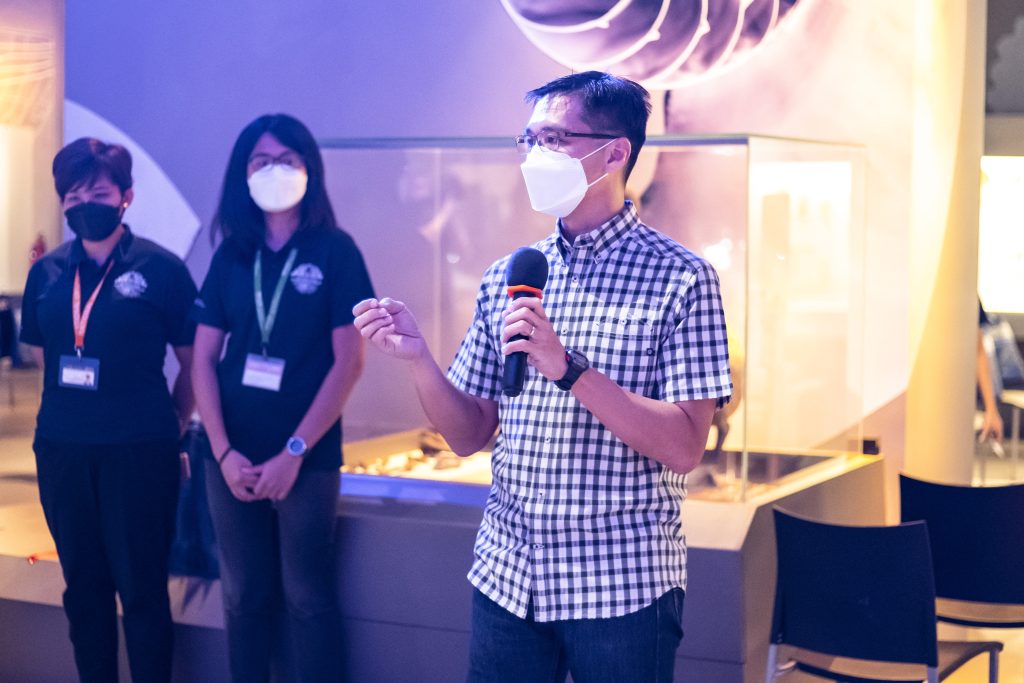
Assoc Prof Darren Yeo, Deputy Head of the museum, giving the opening remarks. (Photo Credit: NUS Development Office)
The museum holds the biodiversity heritage of Singapore and much of Southeast Asia with a growing collection of about a million specimens under our care. Yet, more than just a depository of dead specimens, the museum also takes pride in being a place of active research and discovery, which our guests soon came to know more about.
The day was packed with exciting tours around the gallery, including the highly anticipated Dry and Wet Collection areas which houses our Zoological Reference Collection of over a million specimens. Guests were not only fed with interesting facts of the specimens, but were also enthralled by stories of past expeditions and on-going research developments by our curators.
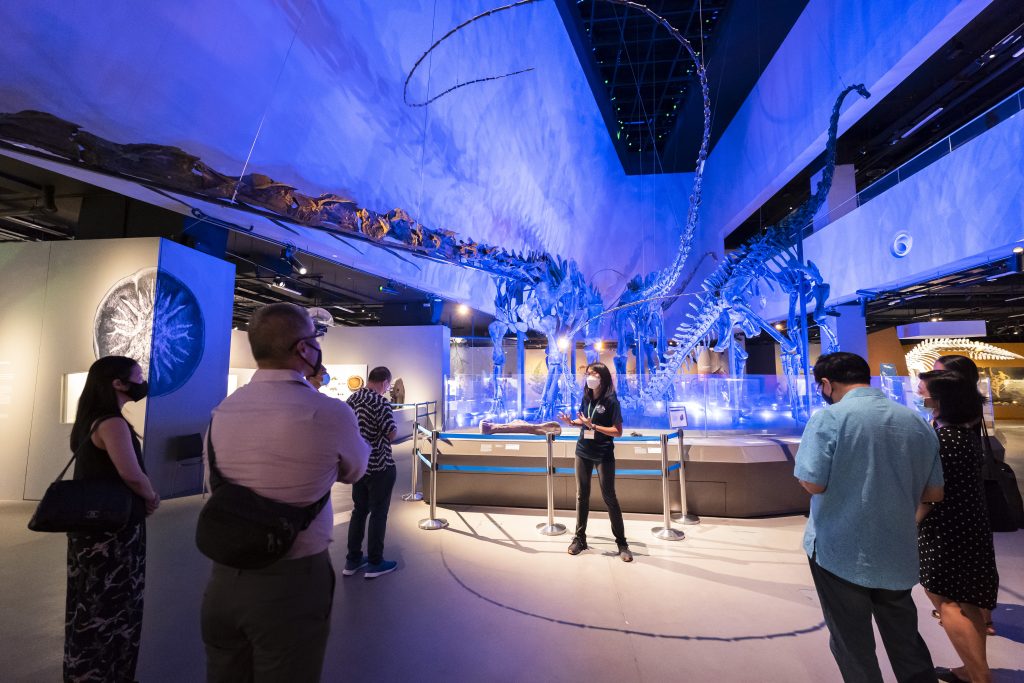
Senior Education and Outreach officer, Cherry Goh, sharing about our spectacular diplodocid sauropod dinosaur fossils to our guests during the gallery tours. (Photo Credit: NUS Development Office)
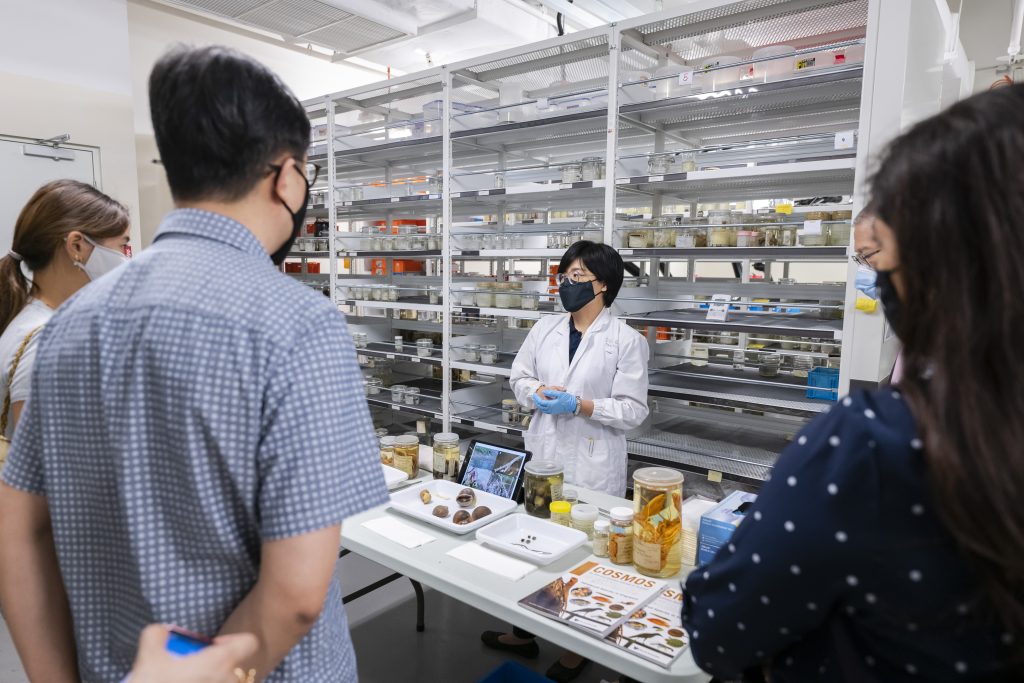
Dr Ng Ting Hui, Curator of Freshwater Molluscs & Worms Collections, sharing on introduced species in Singapore, like the golden or channelled apple snails (specimens featured here) which were likely brought into the island via the ornamental pet trade. Having these specimens helps to keep track of when and where the species has been recorded in Singapore and be used for further research. (Photo Credit: NUS Development Office)
“It was very interesting, especially going to the back to see what the staff and researchers do because that’s not what you usually see when you enter a museum… You don’t really see how people work behind the scenes. I thought it was quite interesting how they collect, classify, and preserve the specimens. And there were so many of them too,” expressed Ms Audrey Chiang, an invited guest.
One of the highlights was the rare opportunity for our guests to view valuable reference collections such as the iconic Fleming butterfly collection which is considered to be the most complete butterfly collection in Singapore and Peninsular Malaysia. Seeing these collections up-close enabled our guests to appreciate the importance of preserving them and how they support researchers, collectors and future students to study and even uncover new species every day!
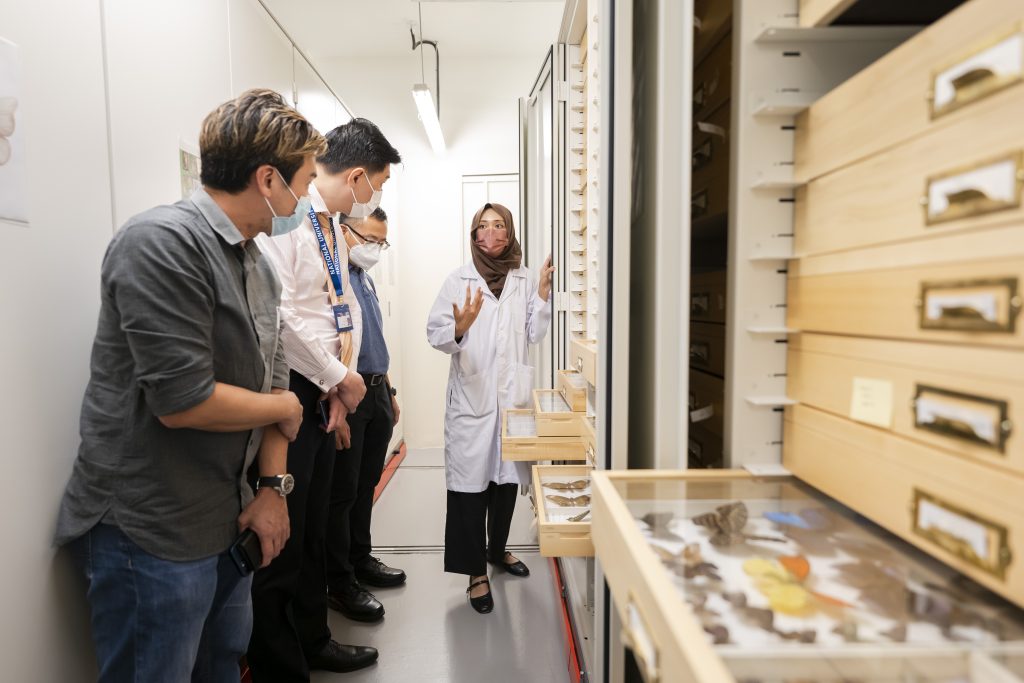
Maimon Hussin, a Specialist Associate, featuring the Fleming butterfly collection which was collected by the late Wicky Fleming (also known as WA Fleming) from 1963 to 1978. It includes nationally critically endangered specimens like the Golden Royal, Mangrove Tree Nymph, Black Rajah and a rare specimen of the Glorious Begum. (Photo Credit: NUS Development Office)
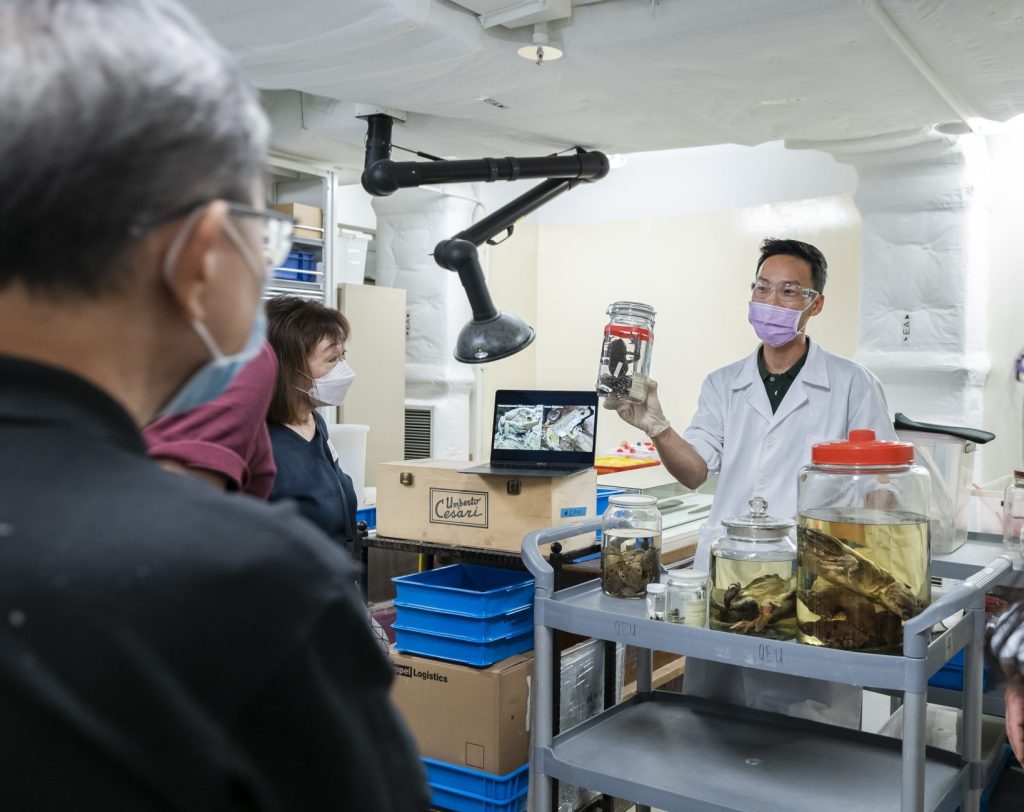
Dr Chan Kin Onn, Curator of Amphibians & Reptiles, sharing about the recent discovery of a new species of tree toad from Malaysia, the yellow-spotted tree toad (seen here is Dr Chan holding a specimen). (Photo Credit: NUS Development Office)
After the tours, guests were invited to listen to some of our presentations. Our speakers included Professor Koh Lian Pin, Director of the Centre for Nature-based Climate Solutions, who presented on the important role biodiversity research plays in nature-based solutions for climate change, and Dr Wan FA Jusoh, our Research Fellow, and Dr Ang Yuchen, our Curator of Insects, who shared some of our latest projects that harness digital technology to support the museum’s work.
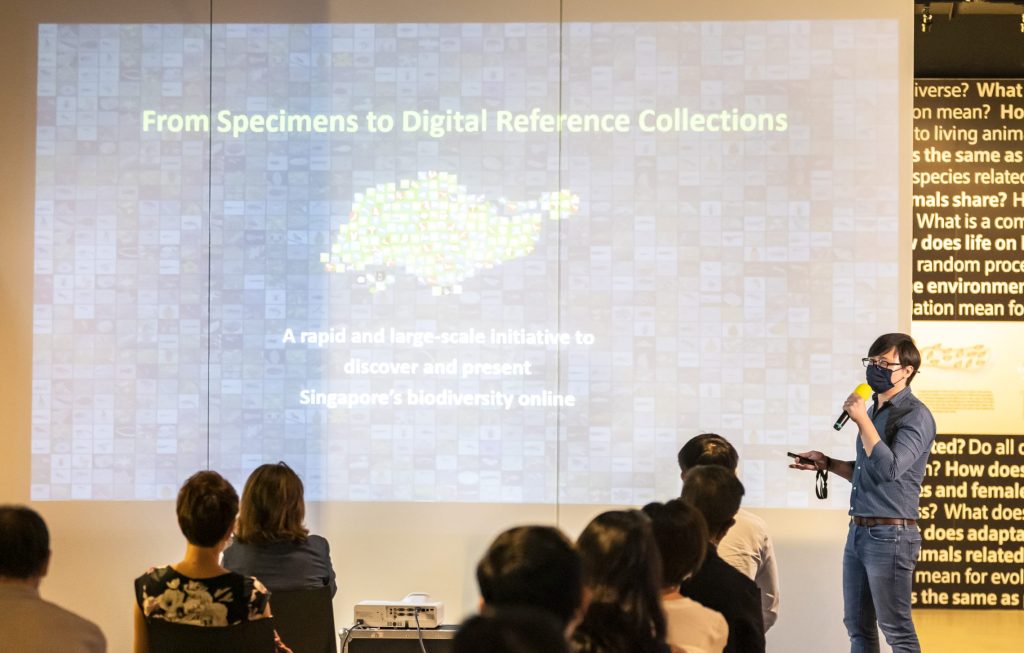
Dr Ang sharing about the museum’s Digital Reference Collection for Singapore’s Biodiversity which is open for public use. (Photo Credit: NUS Development Office)
Many of our guests were impressed by the museum’s extensive collections and research work. Some complimented on how well-preserved our specimens have been kept over the years.
“Speaking to the curators gave us a better idea of how research is done (at the museum) and the collaborations that you actually have with other research institutions overseas. I thought that this was quite an eye-opener”, said Mr Yeong Zee Kin. “I was very amazed that some (of the specimens) are actually more than 100 years old and I can’t tell the difference!”
—
Photos courtesy of the NUS Development Office
Read more on the NUS Giving News here.

